|
By Donald H. Harrison
SAN DIEGO—With prizes for tossing rings, knocking down steel milk bottles,
throwing footballs through holes and other such carnival games and amid
the excitement of jump houses, face painters, and a balloon artist, you might be
tempted to wonder, "What does all this have to do with Purim," the
holiday commemorating how Queen Esther saved the Jews of ancient Persia from the
wicked Haman?
Well, look again, my friend. Today, at the Tifereth Israel Synagogue
carnival, Sandra Foster was not attending just any display for children to
pick lollypop prizes, that was Queen Esther, herself, painted on the
backdrop. And at the football toss, where Josh Wakefield collected
tickets, the figure on the target board was--boo!-- the villainous Haman!
Beyond him, Emma Shapiro stood by another game at which youngsters could throw
Velcro beanbags. And, yup, on the backboard, that was Mordechai riding a
horse.
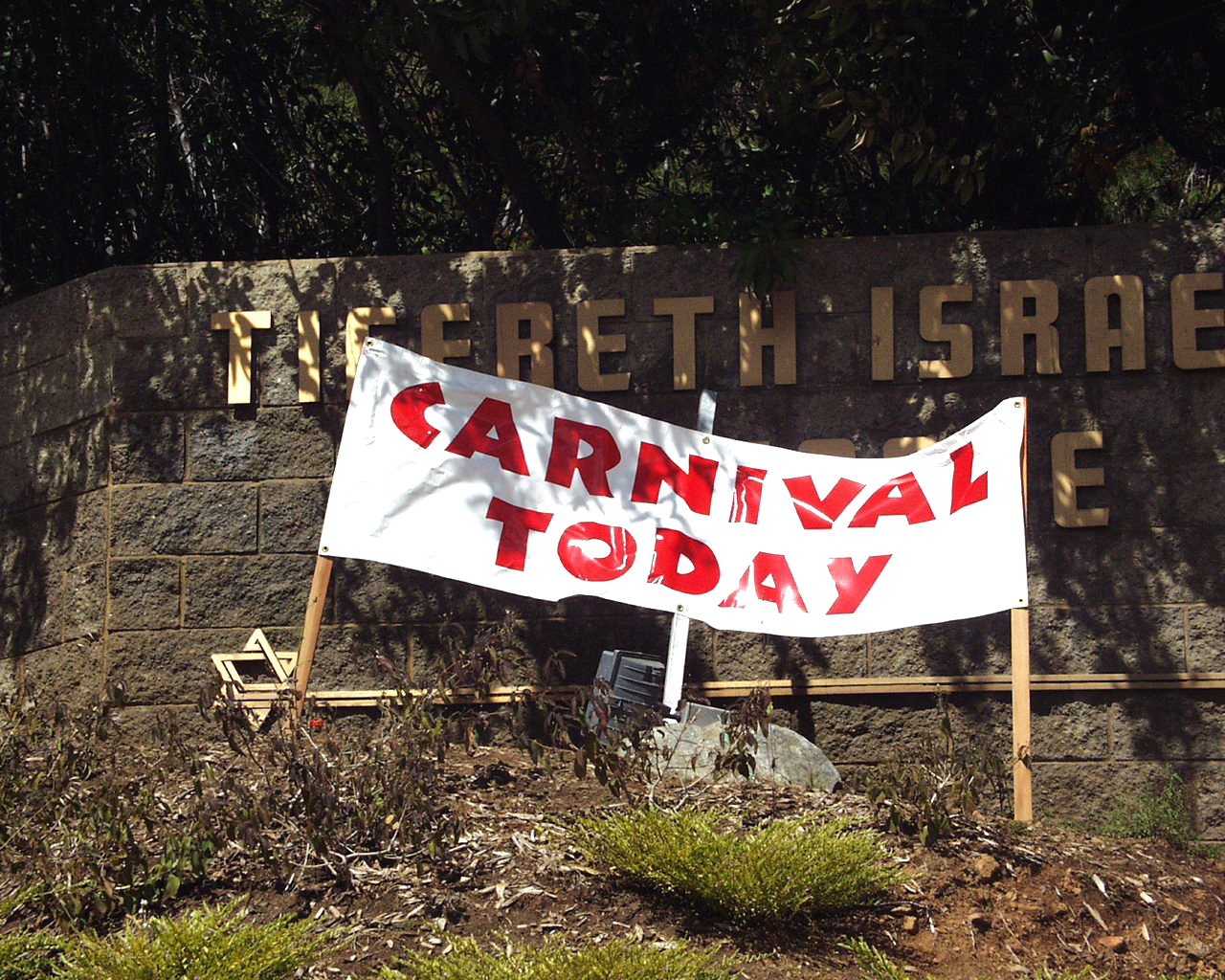
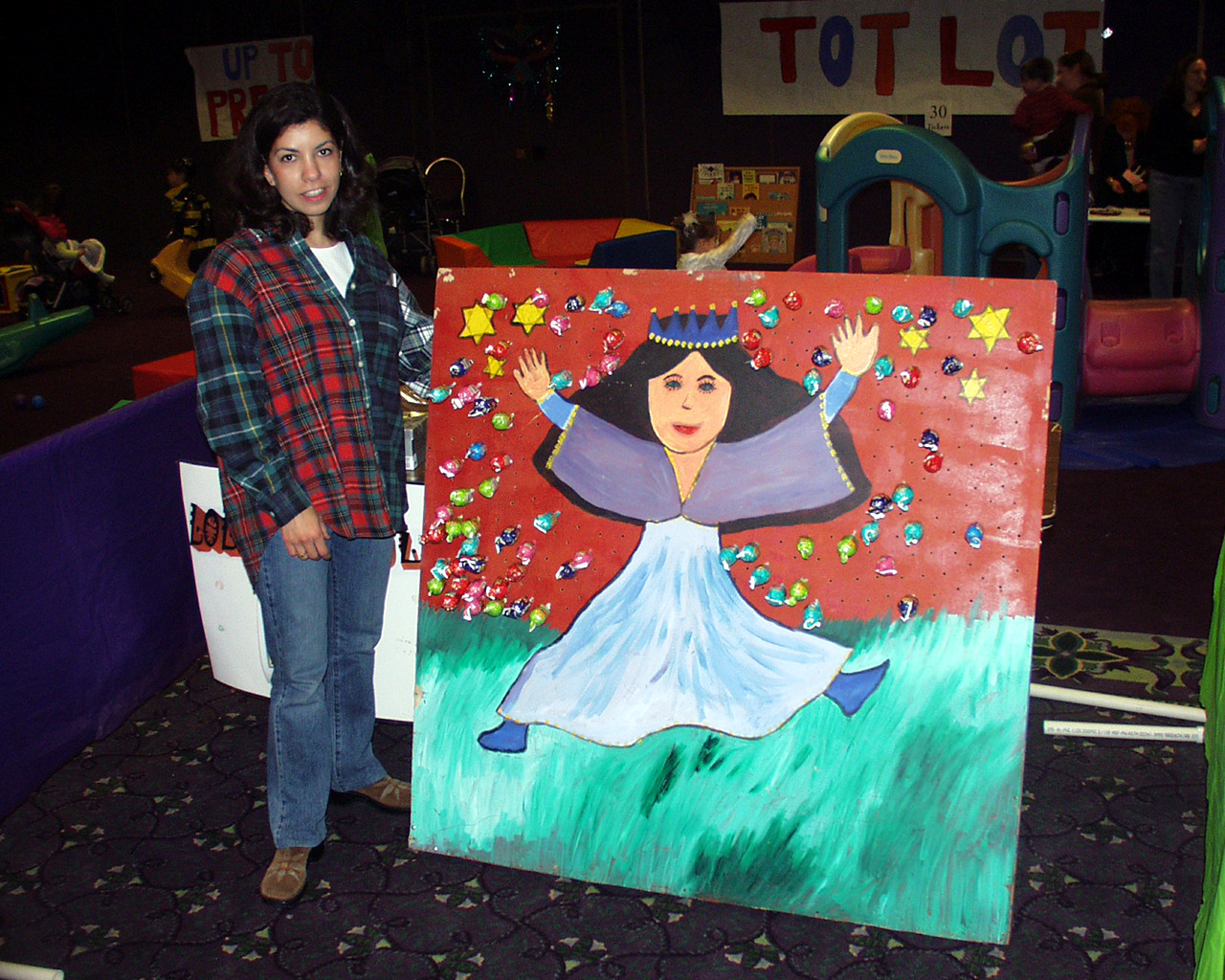
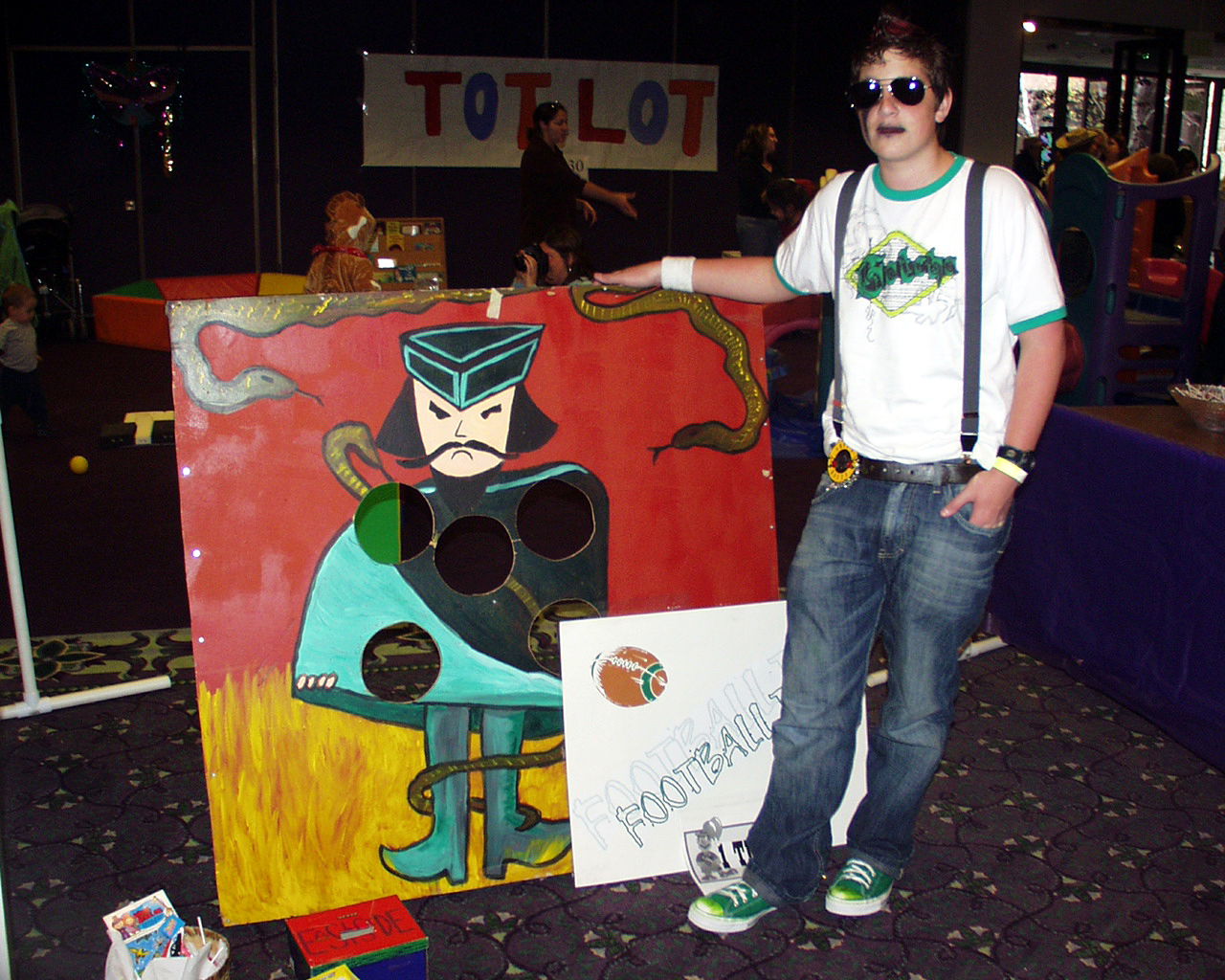 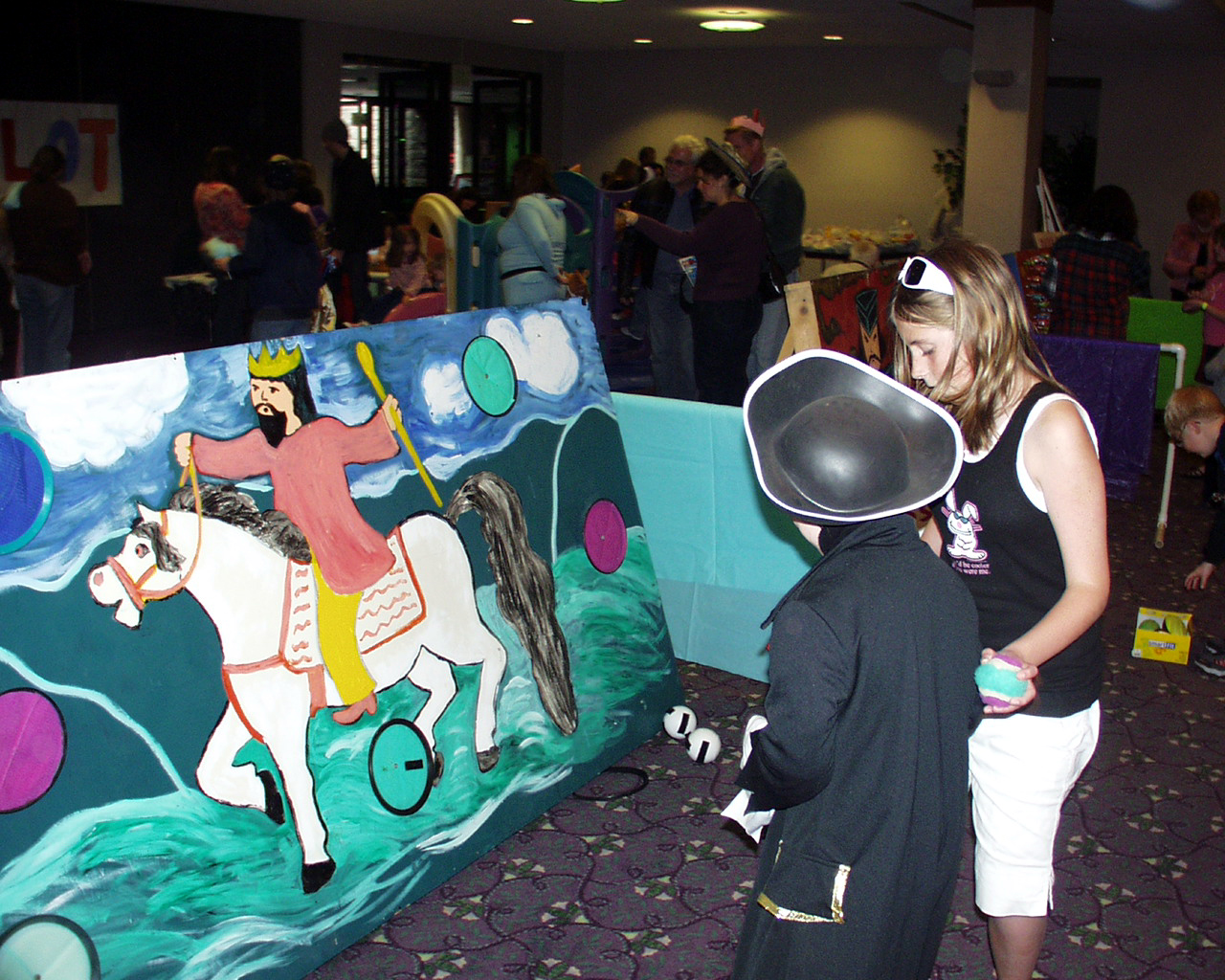
Sign outside Tifereth Israel Synagogue, 6660 Cowles
Mountain Road, San Diego, announces carnival for Purim,
at which an Esther lollypop pull, Haman football toss, and Mordechai bean bag
toss, staffed respectively by
Sandra Foster, Josh Wakefield, and Emma Shapiro, were reminders of the Book of
Esther-based holiday.
At the arts and crafts booth, staffed by the rebbetzen, Judy Rosenthal, children
could create their own colorful window stickers featuring not only Haman
or Mordechai, but also King Ahasheurus, happy-face hamantaschen, and
graggers. Nearby. Natasha Monahan Papousek put henna on people's hands,
perhaps as they did in Shusan in Queen Esther's day, utilizing such designs as a
chai symbol, Magen David, "Mazal Tov," "Shalom," and a dove
with an olive branch. Or if you wished to dip into other cultures, there
were designs from the Gulf States, Morocco, Iran and even India.
A few steps away, Sandi
Masori of Balloon Utopia made various creations, the most popular at this
event being a "princess tiara." Didn't she mean a queen
tiara, as in Queen Esther? "No, a princess" replied Masori,
"maybe for the time just before she married King Ahasheurus, when she was
princess-like." Masori made one of the creations for Mia Duncan,
3. And, speaking of King Ahasheurus, Joel Foster, 6, came to the carnival
dressed like his royal majesty.
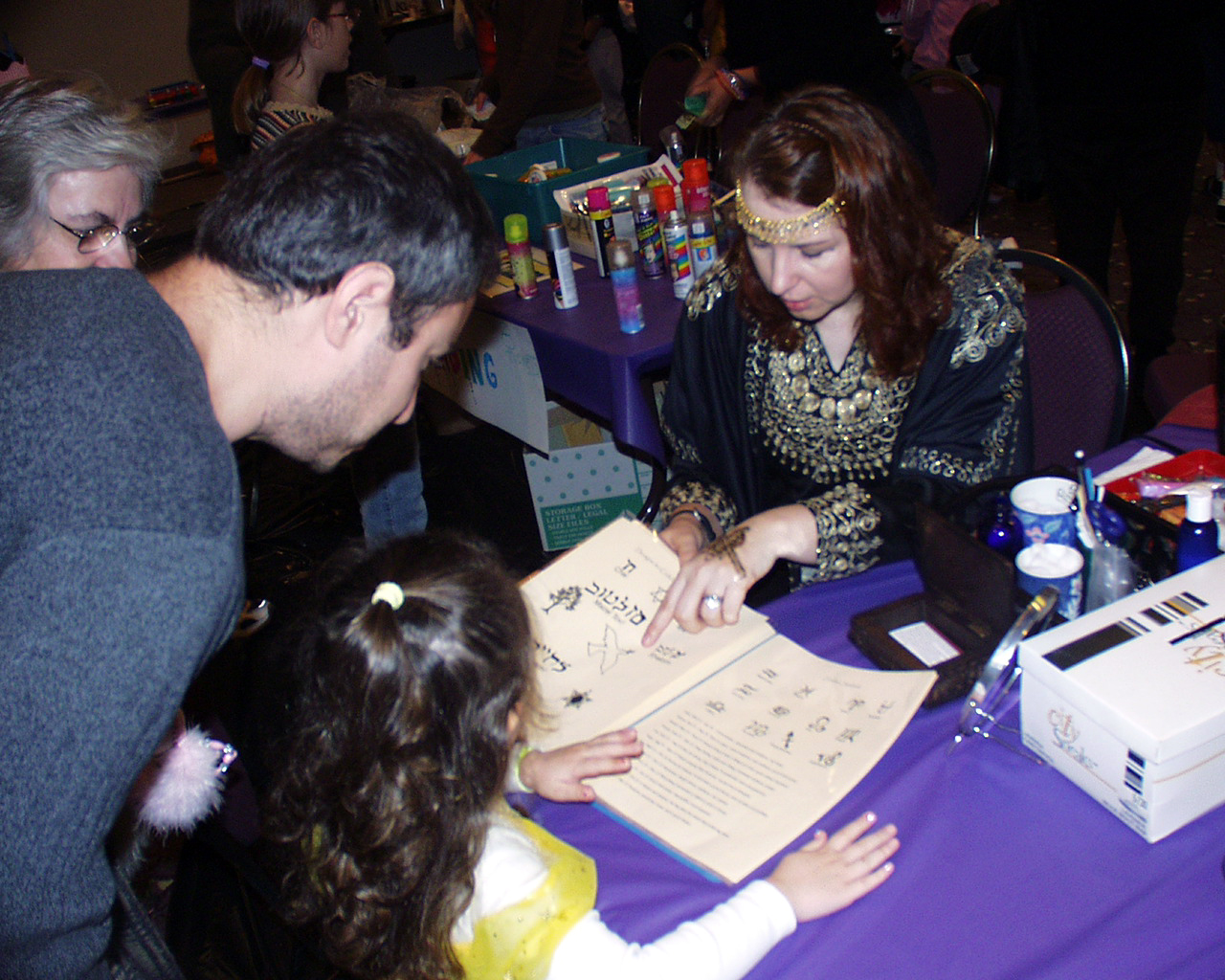 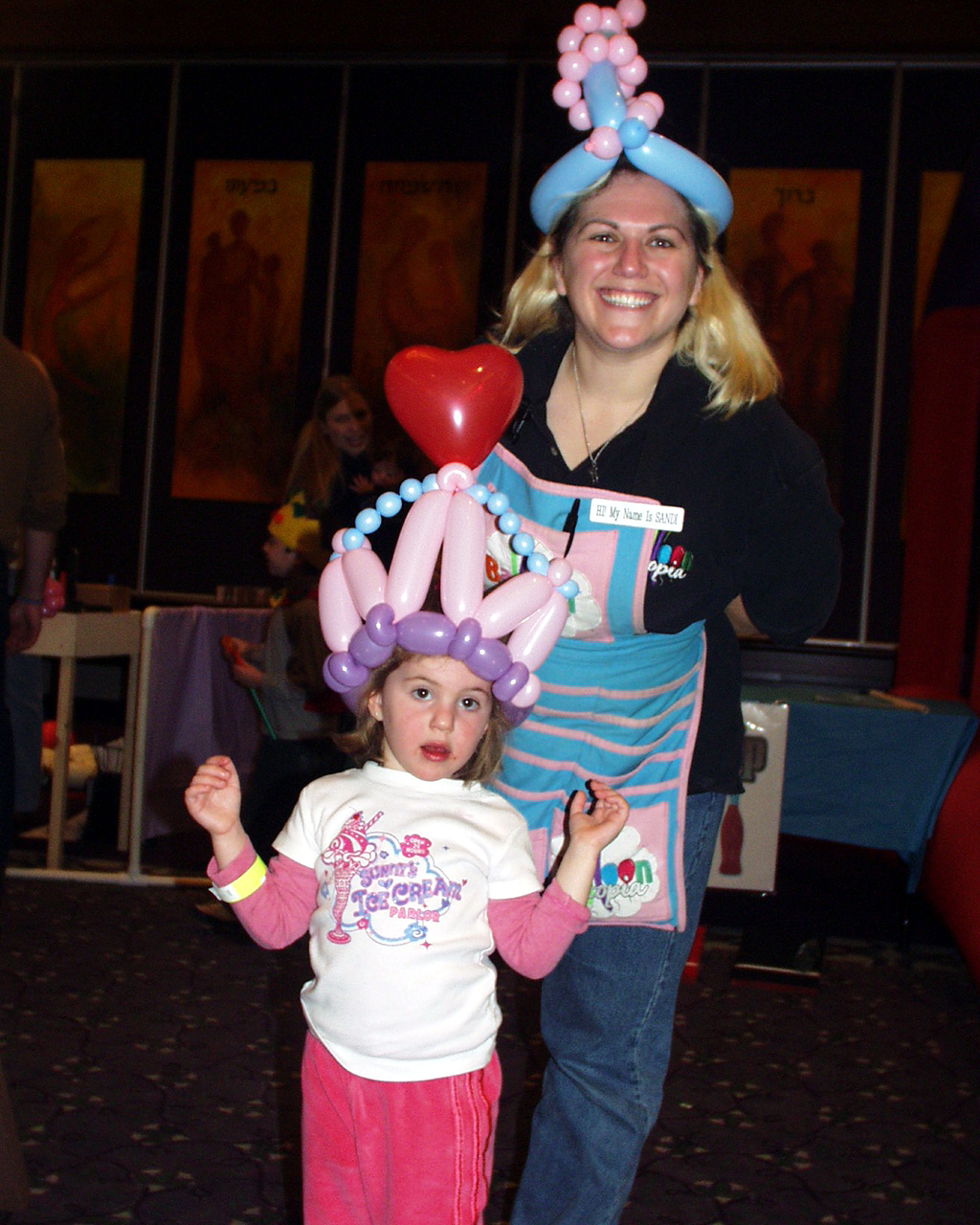 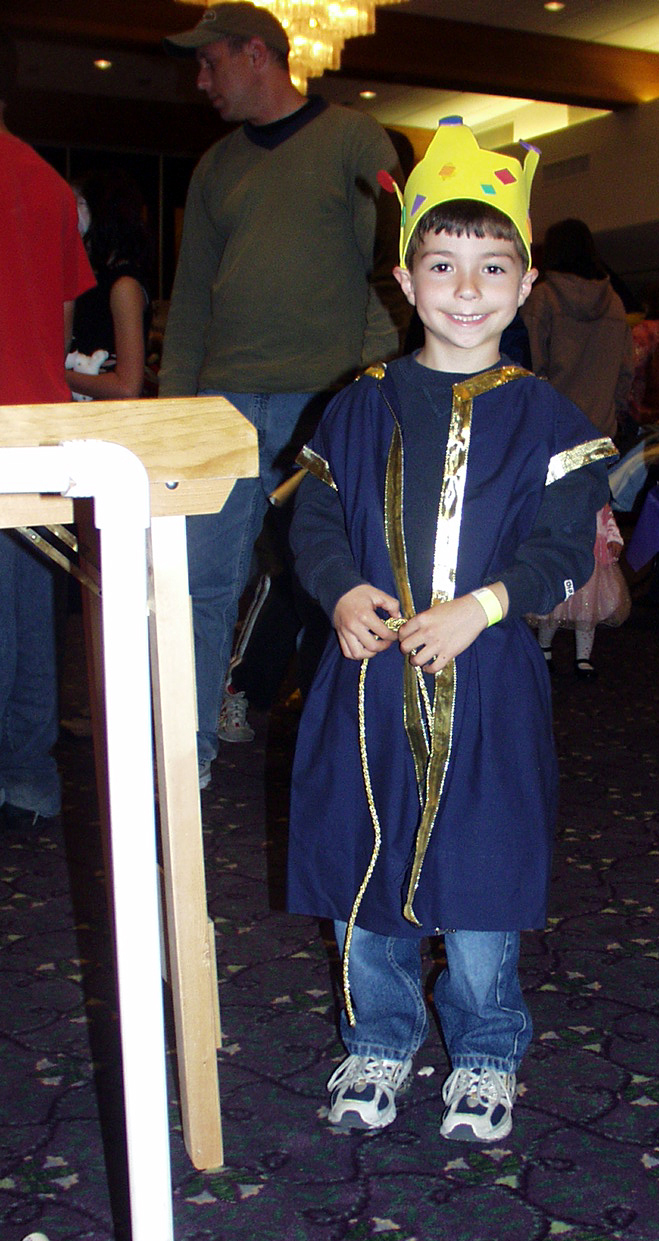
Carnival goers look over henna designs of Natasha Monohan
Papousek; Mia Duncan, 3, shows off princess Tira fashioned by Sandi Masori
of Balloon Utopia, and Joel Foster, 6, models his King Ahasheurus costume.
Besides through games, another way to knowledge was
through the stomach. Hamentaschen, those three-cornered pastries with a
variety of center fillings, were for sale. Six of them baked by Giela Gray were
quite large, about 18 inches along each side. The humungous hamantaschen—perhaps
eligible for a place in some Book of Records—will be auctioned tomorrow night
during Tifereth Israel Synagogue's annual reading of the megillah, the
story from the Book of Esther. Last year five such hamantaschen raised
over $625 at auction, Gray said. For those with less
prodigious appetites, normal sized hamantaschen could be purchased at $1 apiece.
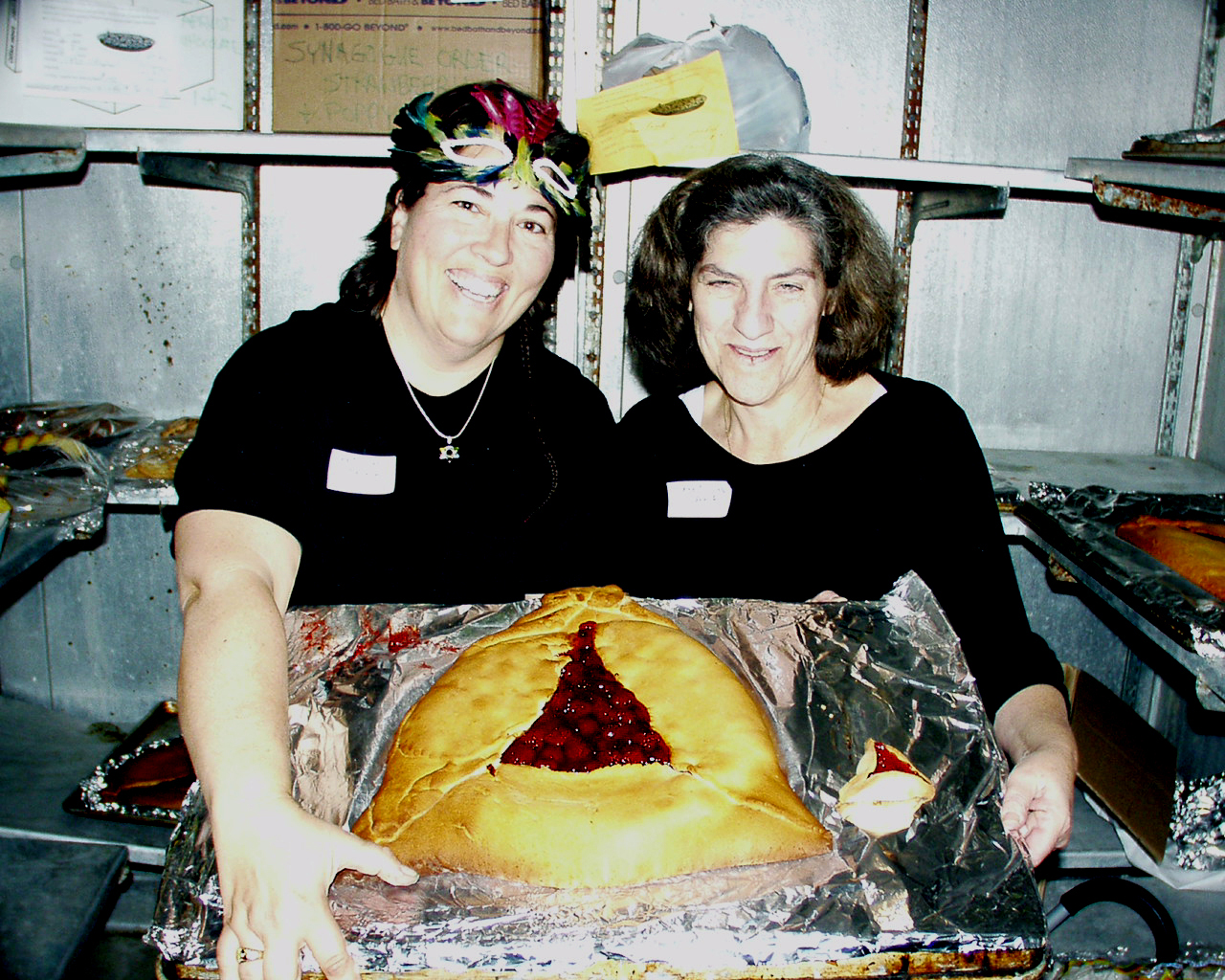
Giela Gray and Sandy Fionda hold up a tray containing
two hamentaschen, one regular sized the other megasize.
Although the pastries are a favorite treat, they
had competition from a favorite of carnival-goers the wide world over. Shayna
Breite-Pessot went for the hamantaschen. But the Batman-clad Shor Masori
opted for the sticky but yummy cotton candy.
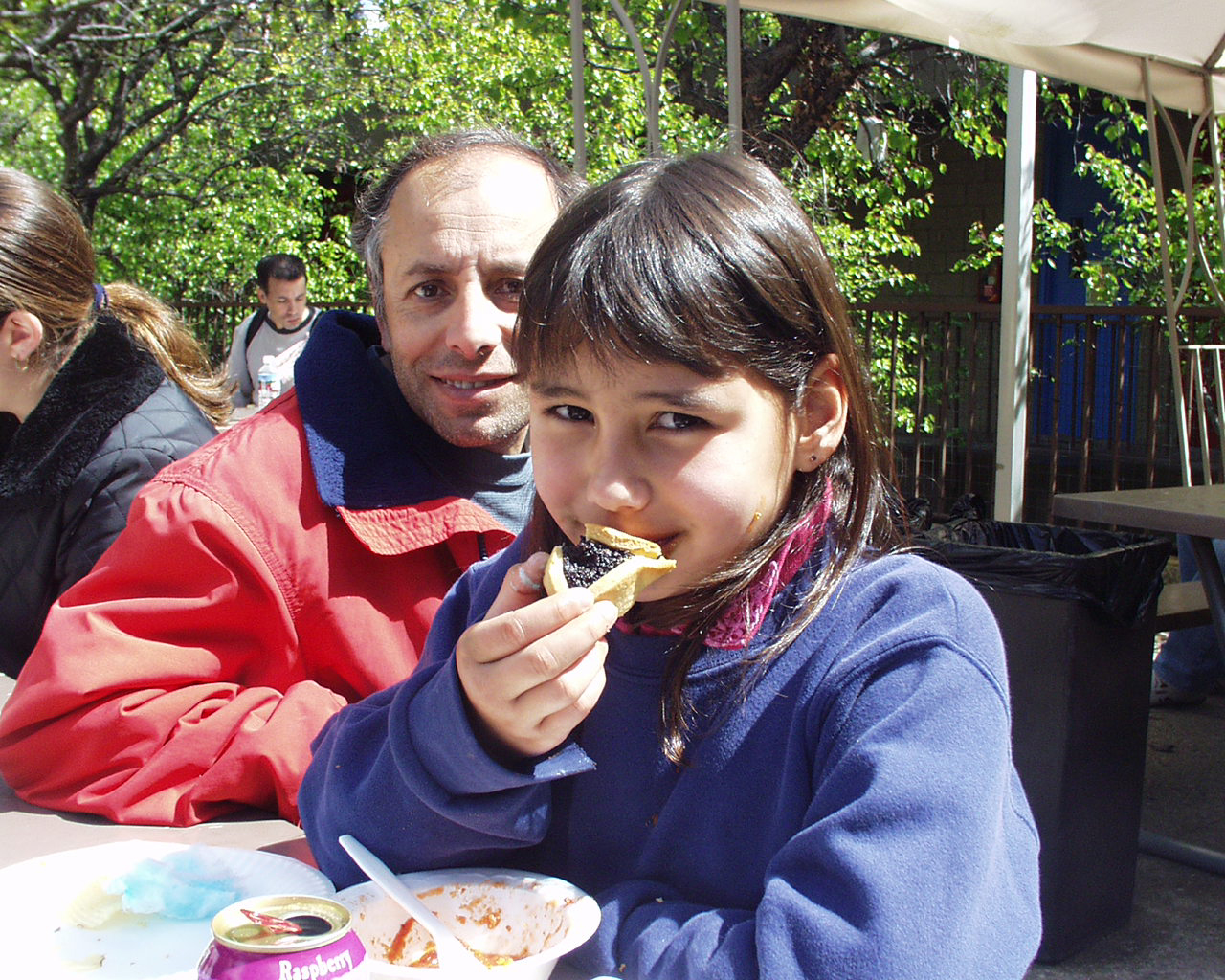 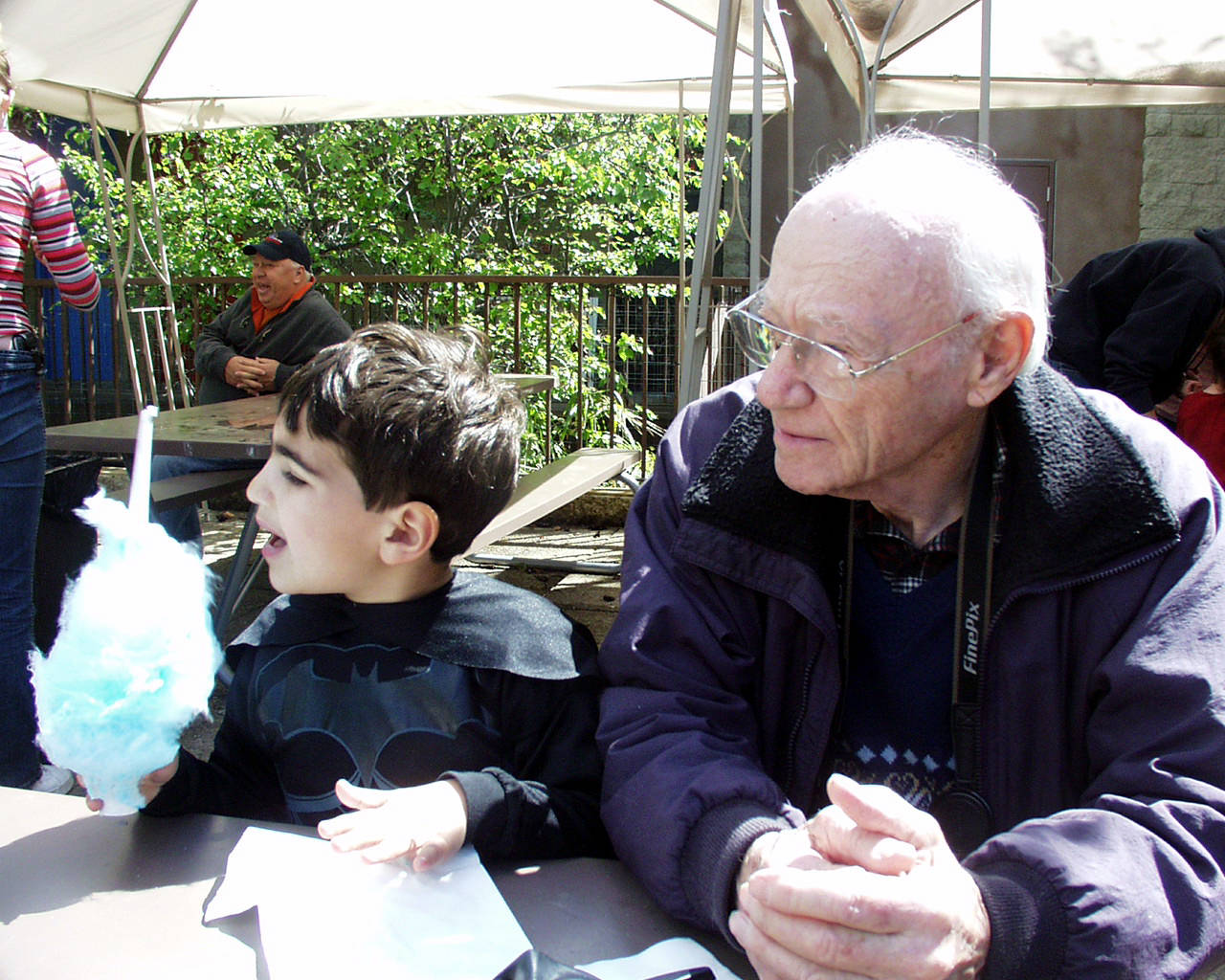
Shayna Breite-Pessof samples a prune hamentasch
as her father Maurice Pessot looks on. At right, Sam
Zeiden keeps watch as his great-grandson, Shor Masori, gets ready to dig
into the cotton candy.
Beth Klareich, youth director for the synagogue, and
Tracy DeTagyos, a parent of pre-schoolers, said they were particularly pleased
that this year's Purim carnival had a separate game area for children under the
age of 4.
In the special area, there were small cars that ran along on tracks, tiny
slides, a separate jump house, and a reading nook, where parents could choose a
book about Purim and explain what all the hullaboo was all about.
|

